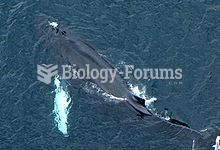Answer to Question 1
C
Feedback
A The sensorimotor stage occurs in infancy and is a period of reflexive behavior.
During this period, the infant's world becomes more permanent and organized.
The stage ends with the infant demonstrating some evidence of reasoning.
B Formal operations is a period in development in which new ideas are created
through previous thoughts. Analytic reason and abstract thought emerge in this
period.
C Concrete operations is the period of cognitive development in which children's
thinking is shifted from egocentric to being able to see another's point of view.
They develop the ability to distinguish fact from fantasy.
D The preoperational stage is a period of egocentrism in which the child's
judgments are illogical and dominated by magical thinking and animism.
Answer to Question 2
1; 4
Rationale:
1. A cephalhematoma is a collection of blood resulting from ruptured blood vessels between the surface of a cranial bone and the periosteal membrane. It can appear between the first and second day after birth, and does not increase in size when the newborn cries. Cephalhematomas can be unilateral or bilateral but do not cross the suture lines. Molding causes the head to appear asymmetrical; this is due to the overriding of cranial bones during labor and birth.
2. A cephalhematoma is a collection of blood resulting from ruptured blood vessels between the surface of a cranial bone and the periosteal membrane. It can appear between the first and second day after birth, and does not increase in size when the newborn cries. Cephalhematomas can be unilateral or bilateral but do not cross the suture lines. Molding causes the head to appear asymmetrical; this is due to the overriding of cranial bones during labor and birth.
3. A cephalhematoma is a collection of blood resulting from ruptured blood vessels between the surface of a cranial bone and the periosteal membrane. It can appear between the first and second day after birth, and does not increase in size when the newborn cries. Cephalhematomas can be unilateral or bilateral but do not cross the suture lines. Molding causes the head to appear asymmetrical; this is due to the overriding of cranial bones during labor and birth.
4. A cephalhematoma is a collection of blood resulting from ruptured blood vessels between the surface of a cranial bone and the periosteal membrane. It can appear between the first and second day after birth, and does not increase in size when the newborn cries. Cephalhematomas can be unilateral or bilateral but do not cross the suture lines. Molding causes the head to appear asymmetrical; this is due to the overriding of cranial bones during labor and birth.







